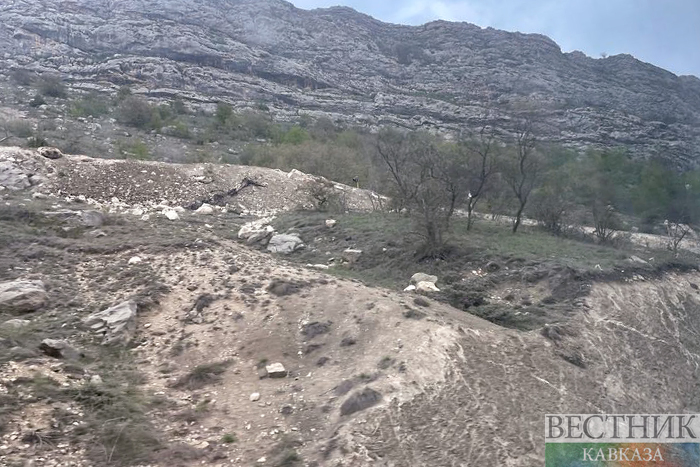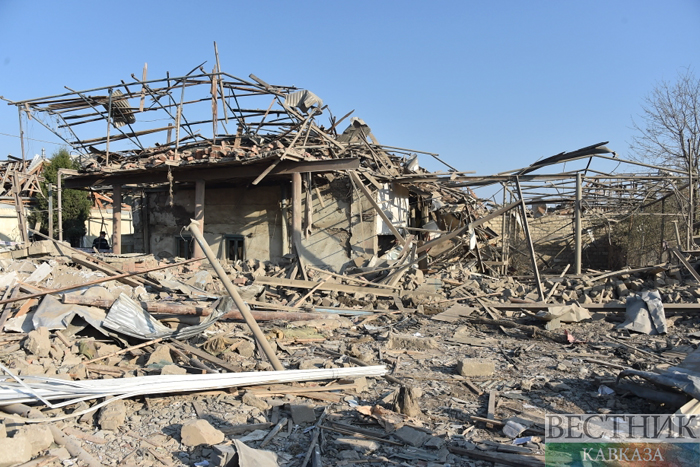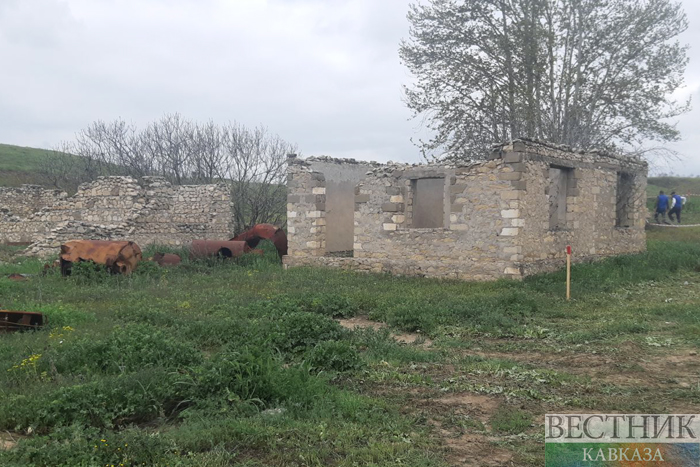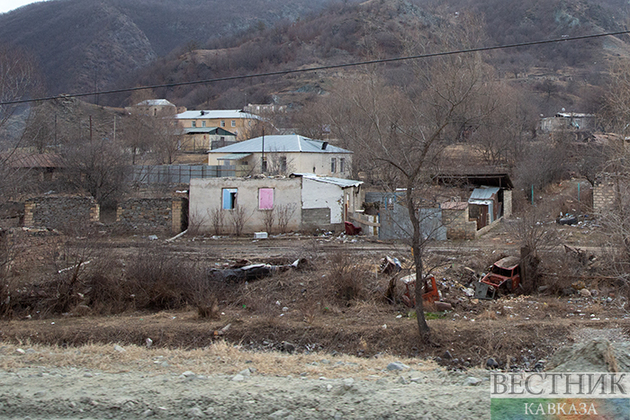Lachin is a district in the territories of Azerbaijan that remained under the occupation of Armenia from the early 1990s until the end of 2020. The district hosts the major land passage between Armenia and the parts of Karabakh that is under the temporary control of Russia’s peacekeeping contingent deployed to the area in November 2020 in accordance with the trilateral [Russia, Armenia, Azerbaijan] statement that ended the Second Karabakh War.
The land passage called the Lachin corridor passes through the central part of the Lachin district and is used by Armenia to communicate with Armenians based in Karabakh. Dozens of Armenian families moved to Lachin from Armenia, Syria and other parts of the world after the occupation of the region in the early 1990s and some of them continued to live in this region even after the 2020 war, Modern Diplomacy writes.
According to the trilateral statement, the sides agreed to build a new highway in three years along the Lachin corridor. The new road would bypass the Lachin town which is returning to the control of Azerbaijan. Azerbaijan has already paid the new highway along the new route while the Armenian side has just started construction works on its territories. As the previous land passage is now returning to the control of Azerbaijan, some supposedly dramatic scenes were recorded in this process as the Armenians settled in the Lachin district refused to leave the region calling it their home. As stated above, they all have settled in Lachin after the 1992 – the year until which the district was home to around 60,000 Azerbaijanis who were forcefully expelled from their homes by the Armed Forces of Armenia. Ayshan Aslan-Mammadli' family from the village of Zabukh was among the victims. Her story and the story of her sister are published by Modern Diplomacy:

"My family have always remembered about the atrocities committed by Armenians in Lachin, in the village of Zabukh where I was born… When I was 11 months old, we were displaced from my ancestral home together with my two sisters aged 3 and 5. Sometimes I think that my heart would have broken down or I would have gone mad if I was old enough to comprehend the atrocities committed by Armenians. My sister, who was 5 years old then, recalls these tragic scenes in more detail. Below I am presenting some of her memories:

As our village is on the border with enemies, after the situation escalated in early 1992, gunshots were heard almost every day. But the sound heard that day was different from the others. On that day, we were forced to leave our house where I was born and grew to 5 years old. A car approached our door; they loaded our important things into the car. For me, my most important things – my toys – were left. I was crying and was asking to take the box where I put my toys. They said, there is no room, let it stay at home, we will come back anyway. They also put us in the car. I can’t still forget how my dog, which we called “Khalli” was looking after us. I cried and said, ‘Khalli left, I want her.’
Since my father was in the voluntary defense regiment, my uncles brought us – my mother, my sisters and me – to my paternal grandmother’s village in Gulabir. On the road, all the cars were under artillery and cannon fire from Armenia, so the drivers had to turn off the lights of the cars. One shot hit the car in front of us. The car burned before our eyes. We should make no light and keep absolute silence.
Then we ran to the place called “thorn ground” and from there to the forest. We didn’t know where we were going in the dark forest. Suddenly a terrible rain began. My uncle and aunt held us, and my pregnant mother held my youngest sister. It was very cold to us. The blanket my mom used to wrap us was completely wet. The heavy rain made the wool blanket even heavier. The firing stopped because of the rain.We managed to make our way back through the muddy forest and arrived at Gulabir by a random car. We were weak and exhausted. In that village, they had completely cut off the electricity and gas, and it was not possible to find even a cup of hot tea for my baby sister to drink. Next day in the early morning, we arrived at my grandmother’s house, located in the village of Guzanli, Agdam. My grandfather’s grave left in Lachin, in the village of Zabukh. That’s where my childhood left as well…

Lachin was considered an inaccessible castle, rich in material and spiritual, natural resources, and mysterious in nature. We had to miss our beautiful homeland for up to three decades. Not only did Armenians kill our people, but they also destroyed our historical monuments, destroyed cemeteries, plundered our wealth and carried out ethnic cleansing. Hardly any Armenians lived on permanent basis in Lachin or in our village before the occupation. In 1995, Armenians from the Middle East were brought and settled in 12 villages of Lachin. One of those villages is our village of Zabukh. They plowed up the cemetery in Zabukh – my grandfather’s grave was also there… They built a church 15-20 meters from our house. They destroyed the school building and many other buildings… And some of them started a new life there calling Lachin their home. They have always been thoughtless of the fact that you have no moral or legal right to call a land your home that your country has forcefully occupied at the expense of the tragedies of thousands of locals.






